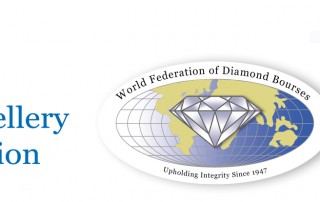Employee recruitment, motivation and retention guide for jewellery industry now available for downloading via CIBJO website
December 13, 2017
“People: Our Greatest Asset,” an employee recruitment, motivation and retention guide prepared specifically for the jewellery industry is now available for downloading on the CIBJO website. Authored by Jonathan Kendall, President of the CIBJO Marketing & Education Commission, the 60-page book provides a practical approach to the employment and induction of professional staff, reward and recognition systems for motivating and retaining valued employees, and problem solving. It was first introduced at the 2017 CIBJO Congress in Bangkok, Thailand, in November.
Including insights from industry figures from around the world, the guide is divided into six chapters, dealing with motivation, recruitment, leadership and teamwork, training and development, reward and recognition, and troubleshooting. Each chapter includes practical toolkits, some of which can be printed and used in the workplace, among them employee self-assessment and manager-assessment forms, templates for recruitment ads and job offers, interview questionnaires, interviewee assessment forms, job application forms, staff induction checklists, employee training and development records, and much more.
“People are any business’ greatest asset,” explained Mr. Kendall. “This guide has been developed to help all types of companies in the jewellery trade to recruit, develop, motivate and reward their people. As an industry, we need to make sure our employees are motivated and engaged. Today the levels of competition are greater than ever, and when our consumers enter our jewellery environments, it’s vitally important they are met by happy, positive and supportive staff.”
“Although managing teams is never simple,” Mr. Kendall added, “ ‘People: Our Greatest Asset’ is intended to help make the job more efficient and effective. It is a useful reference guide that applies best practice for thinking and implementing employment and employee strategies.”
“ ‘People: Our Greatest Asset’ is a valuable addition to the series of business guides CIBJO has produced for the jewellery industry, and it is the first that focuses specifically on employee relations,” said CIBJO President Gaetano Cavalieri. “This is a subject of critical importance, because ultimately any business is only as good as the people who work for it. In producing this guide, Jonathan Kendall has broken the topic down into it most basic components, and then provided real-world tools for company owners and managers to use. We are proud to be able to make it available to the industry.”
The new book can be downloaded from the CIBJO website at: http://www.cibjo.org/responsible-business-guides/ for a fee of 19.90 Swiss francs. Members of organisations that are members of CIBJO are entitled to receive ‘People: Our Greatest Asset’ free of charge. They are recommended to contact the organisations of which they are members to arrange delivery of the documents by email.








